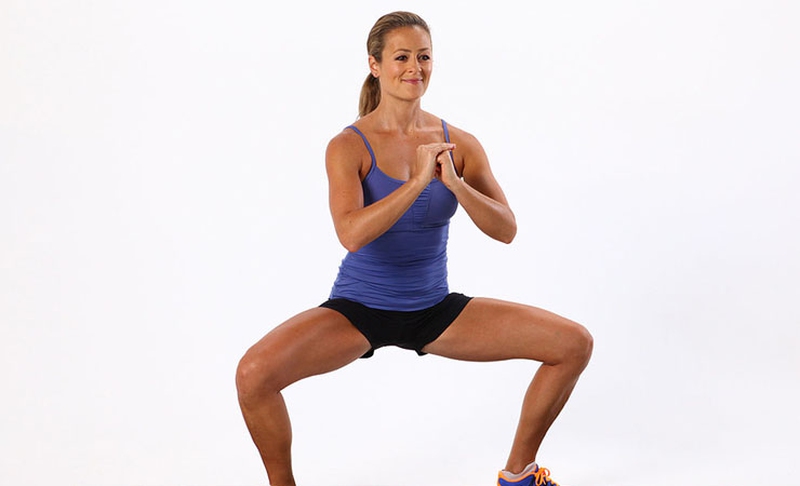The other day you had a great workout, but today you can hardly move due to the soreness in your thigh muscles. This is referred to as delayed onset muscle soreness or DOMS. DOMS can make even the most enthusiastic gym-goer pledge to never do another squat again each time they try to walk upstairs or sit on a chair. However, there are certain tips and preventive measures that can be taken to relieve and counteract the soreness of muscles.

Thighs Hurt after Squats: Why and What to Do
It is not entirely known what causes DOMS. However, it is quite possible that the cause of the soreness in muscles is the microscopic muscular tears that you form in your muscles while exercising. You will generally feel the muscle soreness in your thighs around 24-48 hours after performing squats. Changing your level of physical activity or exerting your muscles to the point they are fatigued are the most common causes of delayed onset muscle soreness.
If your thighs hurt after squats, you can relieve the muscle soreness using special techniques.
Step 1: Apply ice pack to area of muscle soreness. You can wrap an athletic bandage around the ice pack and thigh so as to help the ice pack stay in place. Alternate and keep the ice pack on and off in 15-20 minutes intervals for up to a period of 2-3 hours.
Step 2: Do a massage of the sore area. Push your hands up from knee on the thigh towards the hip so that muscle tension is relieved. Transition your position by placing one hand on each side of the thigh; now do rotating motions. Utilize circular motions of your hands on any areas that have pain. If formation of knots is felt in the muscles, then massage the knot with a thumb and gently knead that area until the knot goes away.
Step 3: Place pillows under your heel and keep your leg elevated. This will help relieve inflammation as it improves blood flow from the thigh and reduces swelling.
Step 4: You can take a NSAID (non-steroidal anti-inflammatory drugs) including acetaminophen or ibuprofen to decrease swelling and relieve pain. These should be taken as directed till the time pain goes away.
Step 5: Avoid exercising till the time soreness of your muscles subsides. Doing exercise on sore muscles increases the risk of muscle strain and tear. However, you can do light stretching on the thigh; for instance, pull the foot towards your hips and cross one leg over another and stretch the thigh by leaning forward.
In some cases, soreness of muscles can be indicative of a strain of thigh muscles. Look closely at the thigh for any obvious signs of injury, including tenderness to touch or bruising. If you find any such areas, it is recommended to give rest to your muscles and utilize techniques described above to alleviate pain. However, if pain does not go away by itself, it is advised to visit a physician.
Thighs Hurt after Squats: How to Prevent
Whether or not you will have DOMS after a squatting exercise session will depend on a variety of factors including the duration of the exercise, the intensity of the exercise, whether you have done proper warm up of your muscles before exercise, stretching and recovery after the exercise session.
Gradually increasing the number of repetitions or amount of weight each week, so that you give your muscles an opportunity to repair and build. If you feel sore for a few days after performing squats, it’s an indication that you are pushing beyond your limit. Next time, slow down and stop when your muscles get fatigued.
Warming up your thigh muscles before every session of squatting is another important way to ensure that you don’t get sore for days after the exercise. To warm up your thigh muscles, walk or jog in place for 5-10 minutes before every session of exercise-even strength training. Warming up muscles is important because warm muscles have a less tendency to tear and get injured. It is also recommended to spend a few minutes in stretching your muscles after an exercise session.
Resting your thigh muscles is another important factor in combating muscle soreness. Large quadriceps muscles of the thighs require at least 72 hours of complete rest to recover from intense activity as compared to 48 hours required by smaller muscles such as your core muscles. Hence, it is recommended to have squatting session for 2 days a week only.
View All Comments /Add Comment